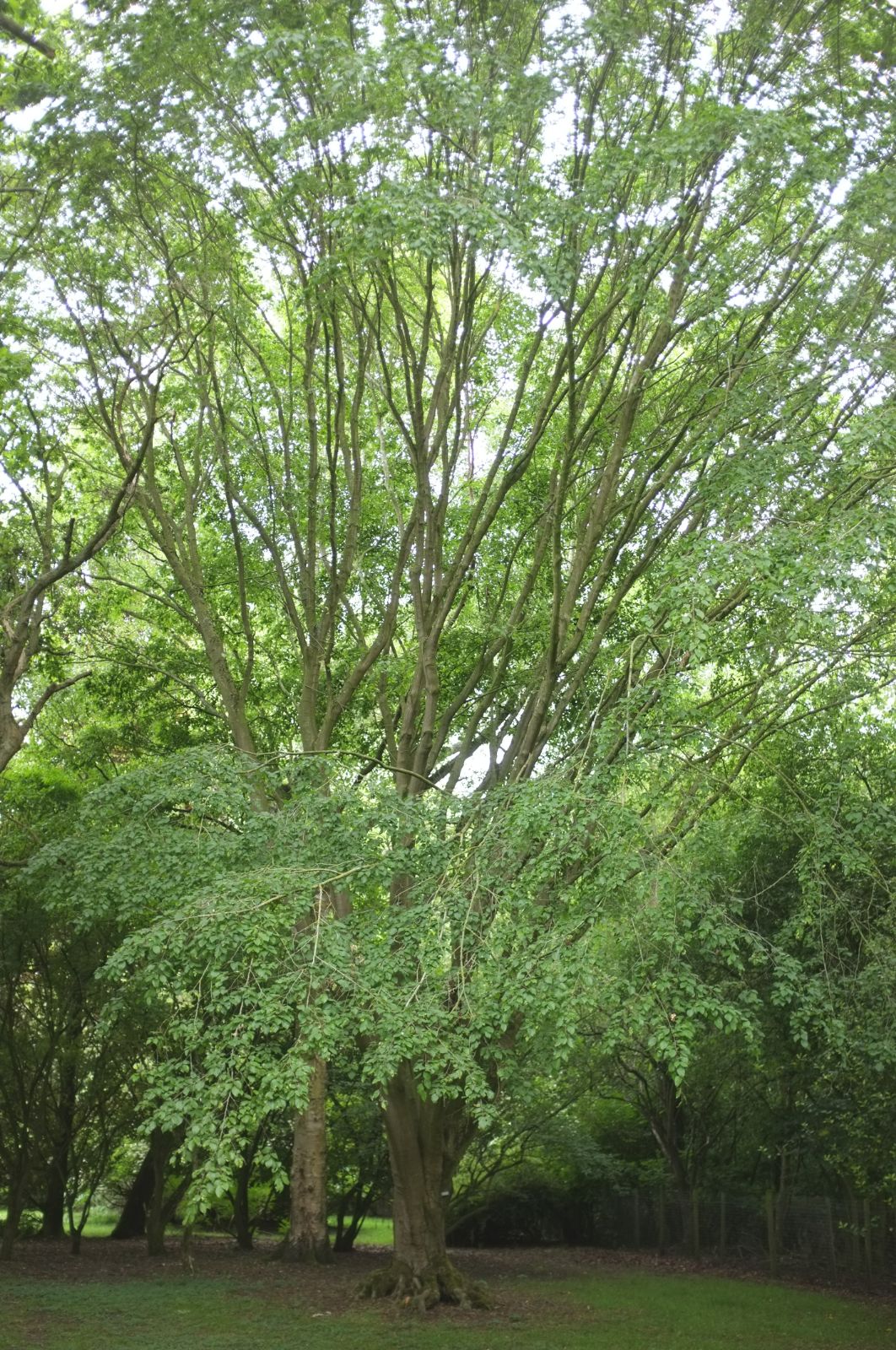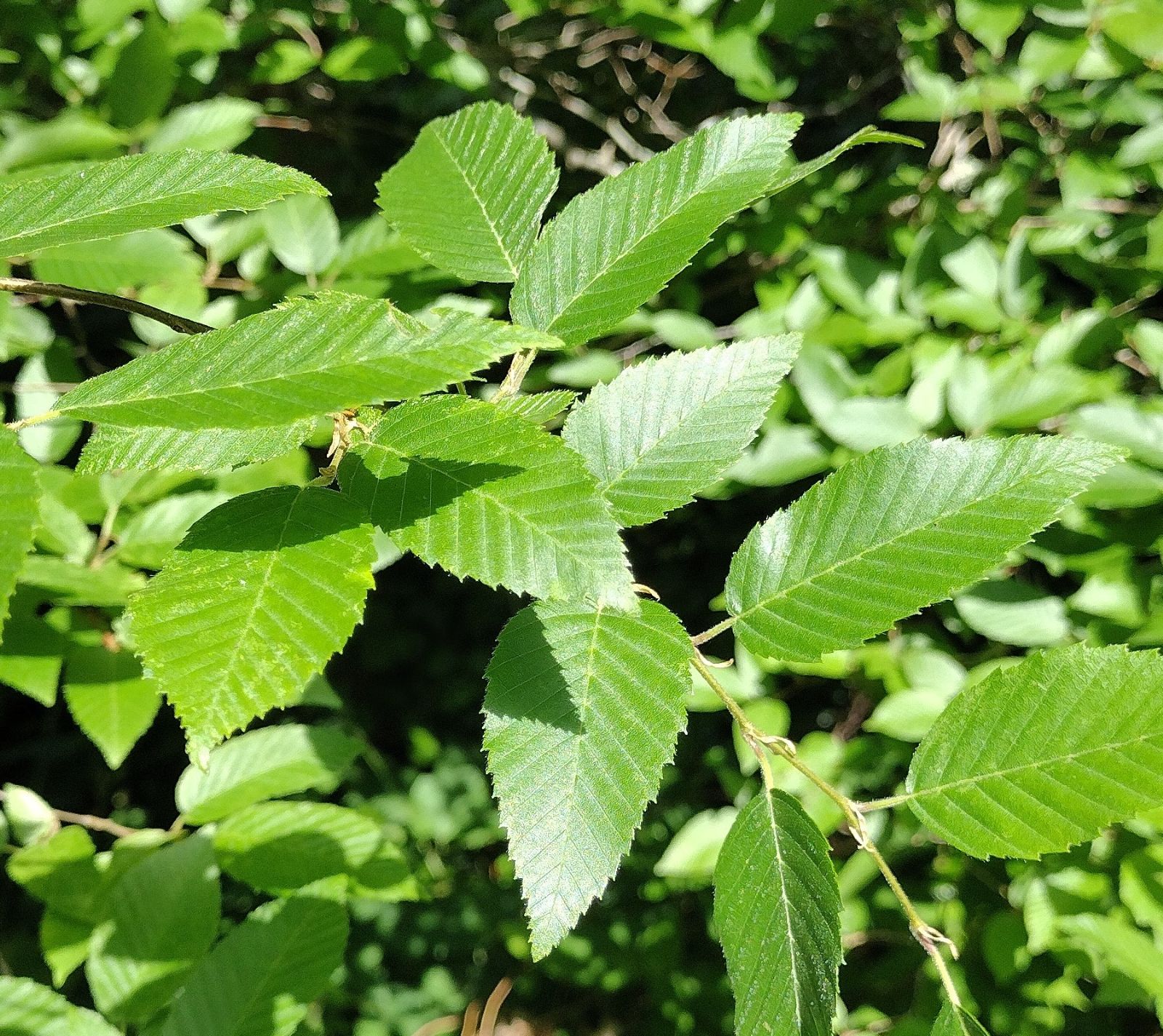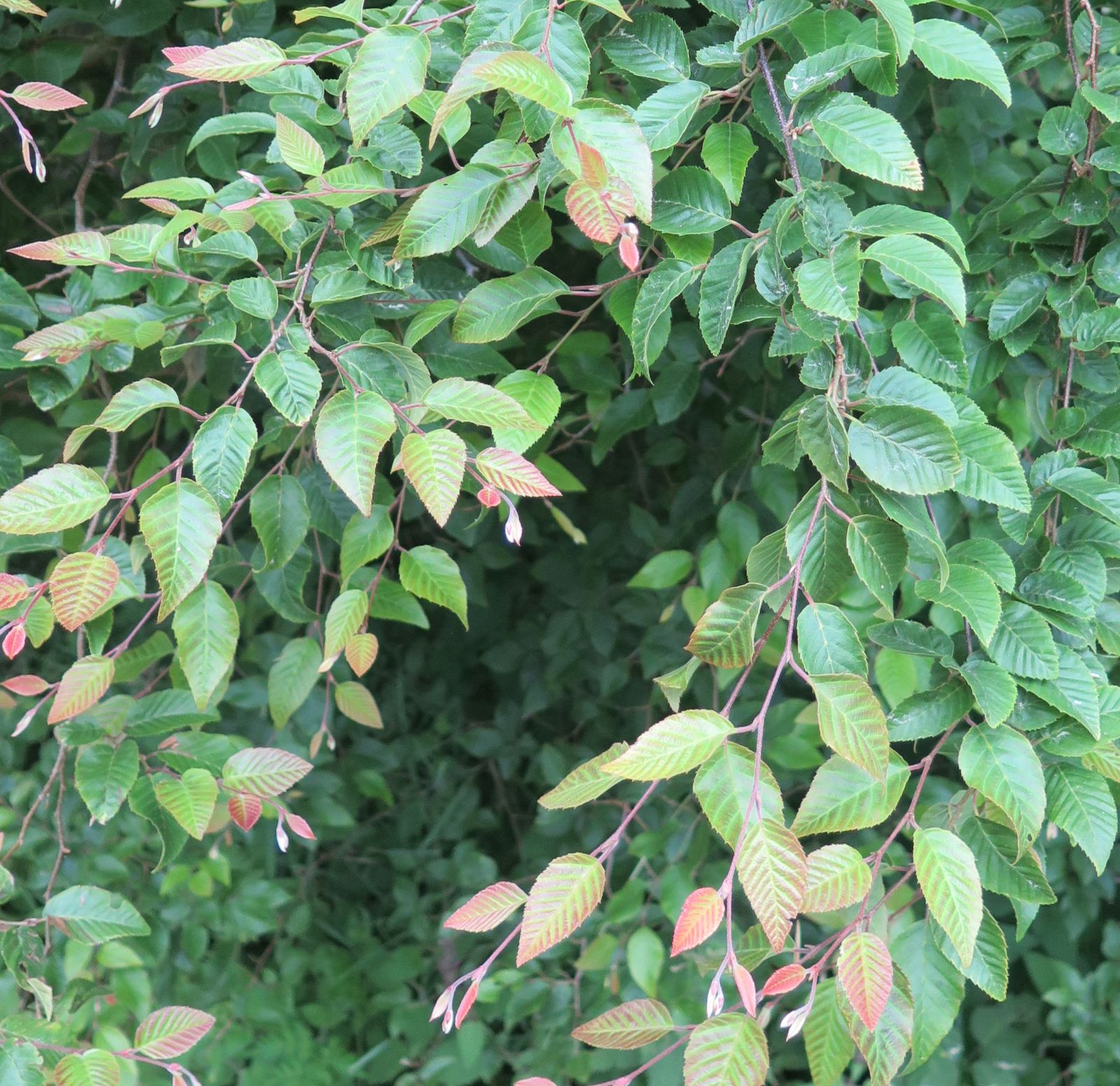Carpinus henryana
Sponsor
Kindly sponsored by
Lord and Lady Aldington
Credits
Owen Johnson (2022)
Recommended citation
Johnson, O. (2022), 'Carpinus henryana' from the website Trees and Shrubs Online (treesandshrubsonline.
Genus
Common Names
- Henry's Hornbeam
Synonyms
- Carpinus tschonoskii var. henryana H.J.P. Winkl.
- Carpinus hupeana var. henryana (H.J.P. Winkl.) P.C. Li
Infraspecifics
Other taxa in genus
- Carpinus betulus
- Carpinus caroliniana
- Carpinus cordata
- Carpinus faginea
- Carpinus fangiana
- Carpinus fargesiana
- Carpinus hebestroma
- Carpinus japonica
- Carpinus kawakamii
- Carpinus laxiflora
- Carpinus londoniana
- Carpinus mollicoma
- Carpinus monbeigiana
- Carpinus omeiensis
- Carpinus orientalis
- Carpinus polyneura
- Carpinus pubescens
- Carpinus rankanensis
- Carpinus × schuschaensis
- Carpinus shensiensis
- Carpinus tropicalis
- Carpinus tschonoskii
- Carpinus turczaninovii
- Carpinus viminea
Tree to 18 m. Bark grey, roughened and shallowly fissured with age. Shoots purple-brown, with silky hairs at first. Leaves elliptic-lanceolate or oblong-lanceolate to lanceolate, 5–8 × 2–3 cm, base rounded to subcordate, apex acuminate; upper surface matt, with impressed veins, lateral veins in 13–16 pairs, under surface with silky hairs on the veins and axillary tufts, and dotted with glands; margin with usually simple, rather incurved teeth which are not usually mucronate; petiole 1–1.7 cm, very downy. Female catkin 6–7 cm long in fruit; peduncle c. 2 cm, pubescent; bracts D-shaped, untoothed on the straight side but with an auricle at the base that enfolds the nutlet, irregularly and remotely serrated on the curved side but not lobed; nutlet glabrous except from silky hairs at the tip. (Li & Skvortsov 1999; Bean 1976).
Distribution China E Gansu, W Guizhou, Henan, W Hubei, S Shaanxi, E Sichuan, Yunnan
Habitat Forests, 1600–2900 m asl.
USDA Hardiness Zone 6
RHS Hardiness Rating H5
Conservation status Least concern (LC)
Within the group of Chinese hornbeams which are too closely related for genetic analysis to be a useful tool as yet in separating them (Dong et al. 2022), and for which Carpinus turczaninovii Hance is the earliest published name, C. henryana tends to have rather narrow, lanceolate leaves with simple marginal teeth. It was described as a new species by Hubert Winkler in 1914, from material collected by Augustine Henry; plants from the same population had been introduced by Ernest Wilson to the Arnold Arboretum in 1907 (W 4443), reaching Kew in 1912 (Bean 1976). The original tree at Kew, since lost, was only 11 m × 25 cm dbh in 2001 (Tree Register 2022), but trees planted as C. henryana in the mid 20th century by the Norfolk farmer and horticulturalist Maurice Mason have grown much bigger in rich soil, reaching 17 m × 64 cm diameter (at 40 cm on a short bole) in 2019 (Tree Register 2022); they are characteristic of the genus in their rising masses of very slender branches, and share the daintiness of their close allies.
Carpinus henryana is robust enough to grow at the Utrecht University Botanic Gardens (Goosen 2019), at Park der Gärten at Bad Zwischenahn in Germany (Park der Garten 2022), and at Linderslunds Arboretum in southern Sweden (Linderslunds Arboretum 2011). In the continental climate of the eastern United States there is a ‘respectable tree’ at Longwood Gardens in Pennsylvania (Stewart 2010) and it is included in the extensive hornbeam collection at Colonial Park Gardens, New Jersey (Colonial Park Gardens 2022). It is also one of few hornbeam species to be offered in Australia (Lynwood Gardens 2022).
Two additional taxa within this group of hornbeams are currently accepted by Holstein & Weigend (2017) as varieties of Carpinus henryana:
Var. oblongifolia Rushforth is considered by some authorities to be endemic to Mt Baohua in Jiangsu and on this basis has been asssessed as Critically Endangered (Wang & Wang 2019); Holstein and Weigend (2017) and Plants of the World Online (2022), however, include a further series of hornbeams within var. oblongifolia which had been described as separate species by 20th century Chinese botanists (C. funiushanensis P.C. Kuo, C. huana W.C. Cheng, C. hupeana Hu, C. longipes Hu and C. oblongifolia (Hu) Hu & W.C. Cheng) and in this interpretation the taxon may be threatened, but not critically endangered. It is not known to be in cultivation.
Var. simplicidentata (Hu) Rushforth, a plant with a comparably convoluted nomenclatural history, is now represented in several collections in the UK and the United States, and is descibed below.
var. simplicidentata (Hu) Rushforth
Synonyms
Carpinus stipulata Winkler
Carpinus hupeana var. simplicidentata (Hu) P.C. Li
Carpinus simplicidentata Hu
Carpinus turczaninovii var. stipulata (Winkler) Winkler
Differences from var. henryana include: often smaller stature (tree to 8 m); shoot often glabrous from the start; leaf somewhat shorter, with more mucronate teeth and slightly fewer (11–13) pairs of side-veins; fruiting catkin with peduncle only c. 1 cm long. (Li & Skvortsov 1999).
Distribution
- China – E Gansu, W Hubei, S Shaanxi
RHS Hardiness Rating: H5
USDA Hardiness Zone: 6
The simple toothing of this variety – in most hornbeams the toothing is elaborately double – is not in fact a point of differentiation from the type of C. henryana; the taxon was first described, as Carpinus simplicidentata, in 1948 by Xiansu Hu, and the toothing does distinguish it from most of its very close allies. The Flora of China (Li & Skvortsov 1999) treats C. simplicidentata as a synonym of C. stipulata Winkler, while Holstein & Weigend (2017) in their recent taxonomic checklist for the genus treat C. stipulata as a synonym of C. turczanonivii but maintain Rushforth’s treatment of simplicidentata as a variety of C. henryana. (Phylogenetic analysis has failed to resolve this issue, as all of these taxa seem too close to be reliably separated (Dong et al. 2022). Submerging all of them within C. turczaninovii would make good practical sense; for now, and for the sake of consistency, this account follows the nomenclature recommended by Holstein and Weigend.)
At Howick Hall in Northumberland there are several trees to 6 m tall (Tree Register 2022), grown as C. hupeana var. simplicidentata and as C. henryana var. stipulata, from seed from the Shanghai Botanical Garden (SBG 93/25 and 96/100) and from the associated Qingpu Paradise Horticultural Company (QPH 96/44). A plant from the latter source at Kew suffered badly from squirrel-damage and has made a very branchy plant 8 m tall in 2022, and there is another at the Westonbirt National Arboretum, 5 m tall by 2014 (Tree Register 2022). A younger plant is at the Grange Farm Arboretum, Matthew Ellis’ remarkable collection in the middle of the Lincolnshire fens. In Europe, the taxon is hardy at Rogów in Poland (P. Banaszczak pers. comm. to John Grimshaw), and is offered (as C. stipulata) by Pépinière des Avettes in north-west France (Pépinière des Avettes 2022). In North America, a vigorous young tree at the J.C. Raulston Arboretum in North Carolina was obtained from Heronswood Nursery (Grimshaw & Bayton 2009); the taxon is also grown at the University of British Columbia in Vancouver, Canada (Akulova 2016).
These cultivated plants are small-leaved and elegant; the leaves flush bronze and their corrugated quality is emphasised by a strip of appressed hairs between each vein (Grimshaw & Bayton 2009).






